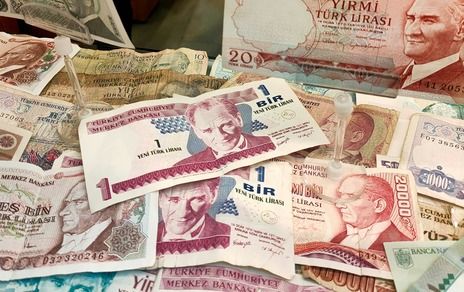When inflation exceeds targets, central banks usually respond by raising interest rates. Higher rates make borrowing more expensive, dampening spending and investment. At the same time, saving becomes more attractive, further cooling the economy. Higher rates also tend to attract foreign investors in search of better yields, strengthening the local currency through the carry trade. So it shouldn't be surprising that when central banks lower rates, the currency, such as the U.S. dollar, as measured by the DXY index, tends to fall.
This way of combating excessive price growth is common sense. That is why, when inflation soared after the COVID-19 pandemic, the ECB and the Federal Reserve began to tighten monetary policy by raising rates. But there are always exceptions. Turkey is one of them. Instead of following the usual playbook, the Turkish central bank cut its interest rate from 19% to 13% between August 2021 and August 2022. Inflation soared from 19% to 80% during that time, and the Turkish lira plummeted to record lows.
It was not until June 2023, with the appointment of the new central bank governor, Hafize Gaye Erkan, that the central bank changed course to a traditional approach. Rates rose from 8.5% to 15%, then 17.5%, and by March 2024, reached 50%. And - surprise, surprise - it worked: by May 2025, monthly inflation had dropped to 1.5%, and annual inflation to 35.4%. Still, Turkey is far from the ambitious 5% inflation target set by the Turkish central bank, which means that the real interest rate will have to remain high (+10%) for longer.
What is the bottom line?
Political interference in central bank decisions rarely ends well, especially when it goes against basic economic principles. That's why markets react negatively when Donald Trump pressures Fed Chairman Jerome Powell to cut rates. At one point, he seemed to have given up on the idea of influencing monetary policy. But judging from reports that Trump invited Powell to a meeting and, according to the White House, “insisted” on cutting rates because current policy puts the U.S. at a “disadvantage,” it's clear he hasn't backed down.
It is important to note that the Fed is not dragging its feet just to spite the president, but is being cautious to ensure inflation does not spike again due to the trade tariff wars initiated by the current presidential administration. If the central bank were to cut rates despite these risks, it could shake confidence not only in the dollar but also in demand for U.S. Treasuries, pushing yields higher, as we have seen recently. Consequently, this could affect the US stock market, while gold could benefit as a safe-haven asset.

